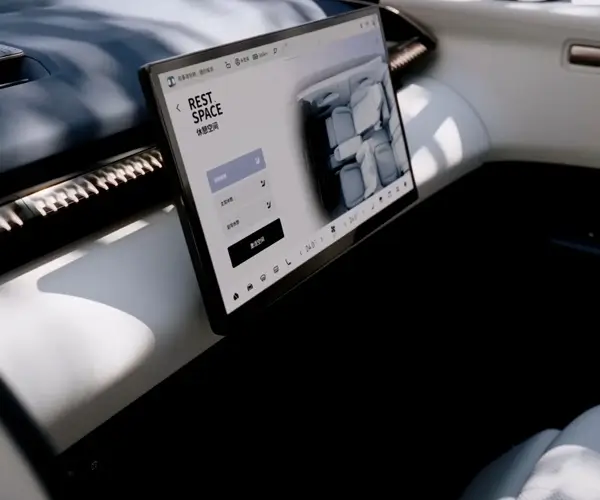Imagine a world where machinery moves with the grace of a seasoned dancer, each motion impeccably synchronized, each task executed with surgical precision. This is no longer the stuff of science fiction but the tangible reality enabled by the evolution of servo motor driver PCBs. These sophisticated circuit boards are the silent workhorses powering a new era of automation—from industrial robots to precision CNC machines, from medical equipment to consumer electronics.

The Heartbeat of Modern Automation: Understanding Servo Motor Driver PCBs
At the core of any advanced motion control system lies the servo motor driver PCB. It’s more than just a printed circuit board; it’s the brain that interprets control signals, modulates power, and ensures that motors perform their tasks with absolute accuracy. In essence, these PCBs coordinate the dance between control commands and mechanical actions, transforming electrical signals into smooth, precise movements.
So, what exactly makes a servo motor driver PCB so indispensable? Let’s break it down:
Precision Control: These PCBs transmit PWM signals and feedback data to regulate motor speed, position, and torque. High-resolution feedback mechanisms—like encoders—relay real-time data needed for micro-adjustments, ensuring the system responds flawlessly.
Power Handling: Servo motors often require significant power, and the driver PCB must efficiently manage current flow, voltage regulation, and heat dissipation. Incorporating features like overcurrent protection and thermal management is crucial for reliability and longevity.
Closed-Loop Feedback Systems: The integration of sensors and feedback loops enables real-time correction. When a deviation occurs—say, a motor stutters or overshoots—the PCB dynamically adjusts to correct the error, keeping operations on target.
Why the Right PCB Matters
The sophistication of a servo motor driver PCB directly influences the performance and reliability of the entire motion system. Consider these aspects:
Responsiveness and Speed: Advanced PCBs with high-speed communication capabilities reduce latency, allowing quick reactions, vital in high-speed applications like robotics manufacturing.
Miniaturization and Integration: As industries demand more compact equipment, designing PCBs that pack advanced features into smaller footprints becomes critical, especially for applications like drones or medical devices.
Durability and Environmental Tolerance: Industrial environments can be harsh—exposure to dust, moisture, or temperature swings. PCBs designed for rugged conditions include conformal coatings and insulation to withstand these challenges.
Key Components of a Modern Servo Motor Driver PCB
Modern driver PCBs are marvels of engineering, integrating numerous components seamlessly:
Power Amplifiers & Drivers: Transistors and MOSFETs handle high-current switching, translating control signals into motor-driving power.
Microcontrollers & Signal Processors: They interpret incoming control signals and process feedback data, managing real-time response algorithms.
Feedback Modules: Encoders, resolvers, or Hall sensors provide positional and velocity data.
Protection Circuits: Fuses, TVS diodes, and overcurrent/thermal protection mechanisms safeguard the system.
Communication Interfaces: CAN bus, EtherCAT, or UART facilitate communication with main control systems, enabling multi-axis coordination.
The Cutting-Edge Features Revolutionizing Servo Driver PCBs
Innovation never stands still. Here are some trending advancements shaping the future:
Integrated Motion ICs: Combining multiple functions—driver, controller, feedback interface—into a single chip reduces complexity and improves response times.
Digital Signal Processing (DSP): Enhances filtering and control algorithms, delivering smoother motion trajectories and reducing jitter.
IoT Connectivity: Enabling remote diagnostics, software updates, and real-time monitoring, which significantly reduces maintenance downtime.
Energy Efficiency: Development of low-loss components, regenerative braking circuits, and optimized power management contribute to greener systems.
Customization: Tailoring PCBs to Fit Unique Needs
Every application has unique requirements—be it the high precision need of semiconductor manufacturing or the rugged durability demanded by offshore automation. Custom-designed servo motor driver PCBs allow manufacturers to:
Optimize component placement for minimal electromagnetic interference. Integrate specialized features for specific motors or sensors. Adjust power ratings and feedback protocols to match application demands.
This first part sets the stage for understanding the importance, components, and innovations behind servo motor driver PCBs. In the upcoming second part, we’ll explore case studies, material selection, manufacturing tips, and future trends shaping this exciting field.
Leveraging innovations in modular drive technology, Kpower integrates high-performance motors, precision reducers, and multi-protocol control systems to provide efficient and customized smart drive system solutions.




































